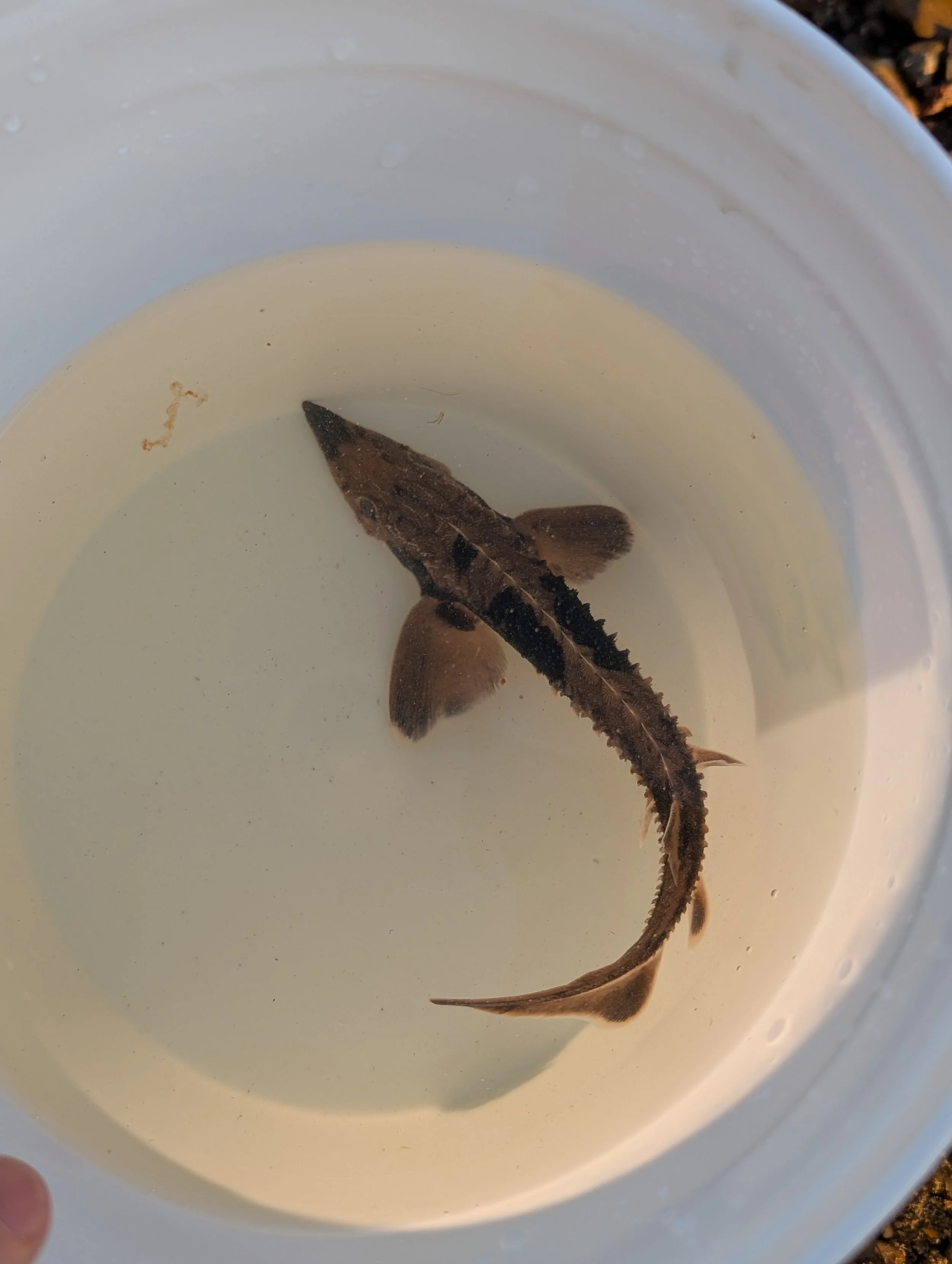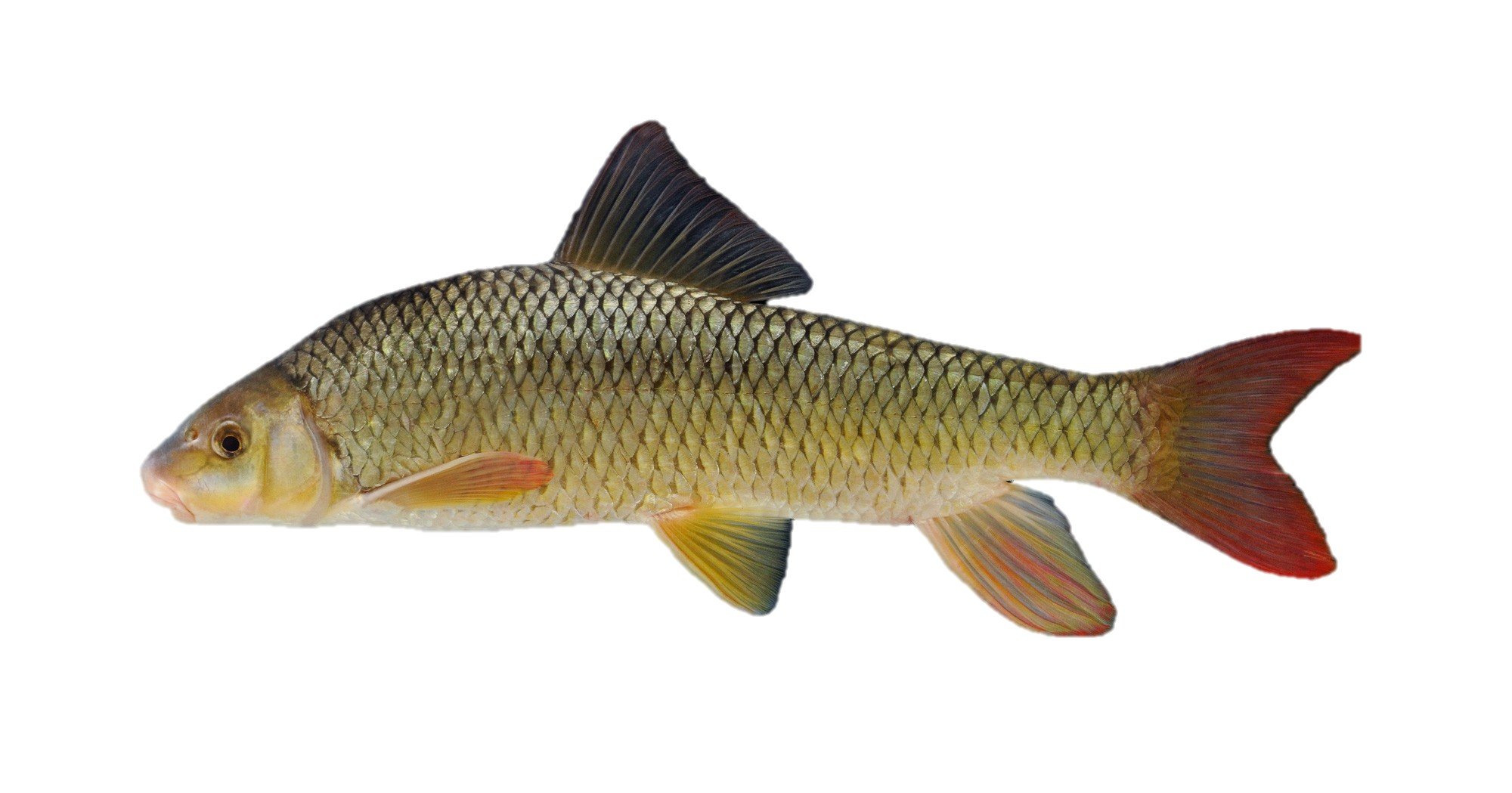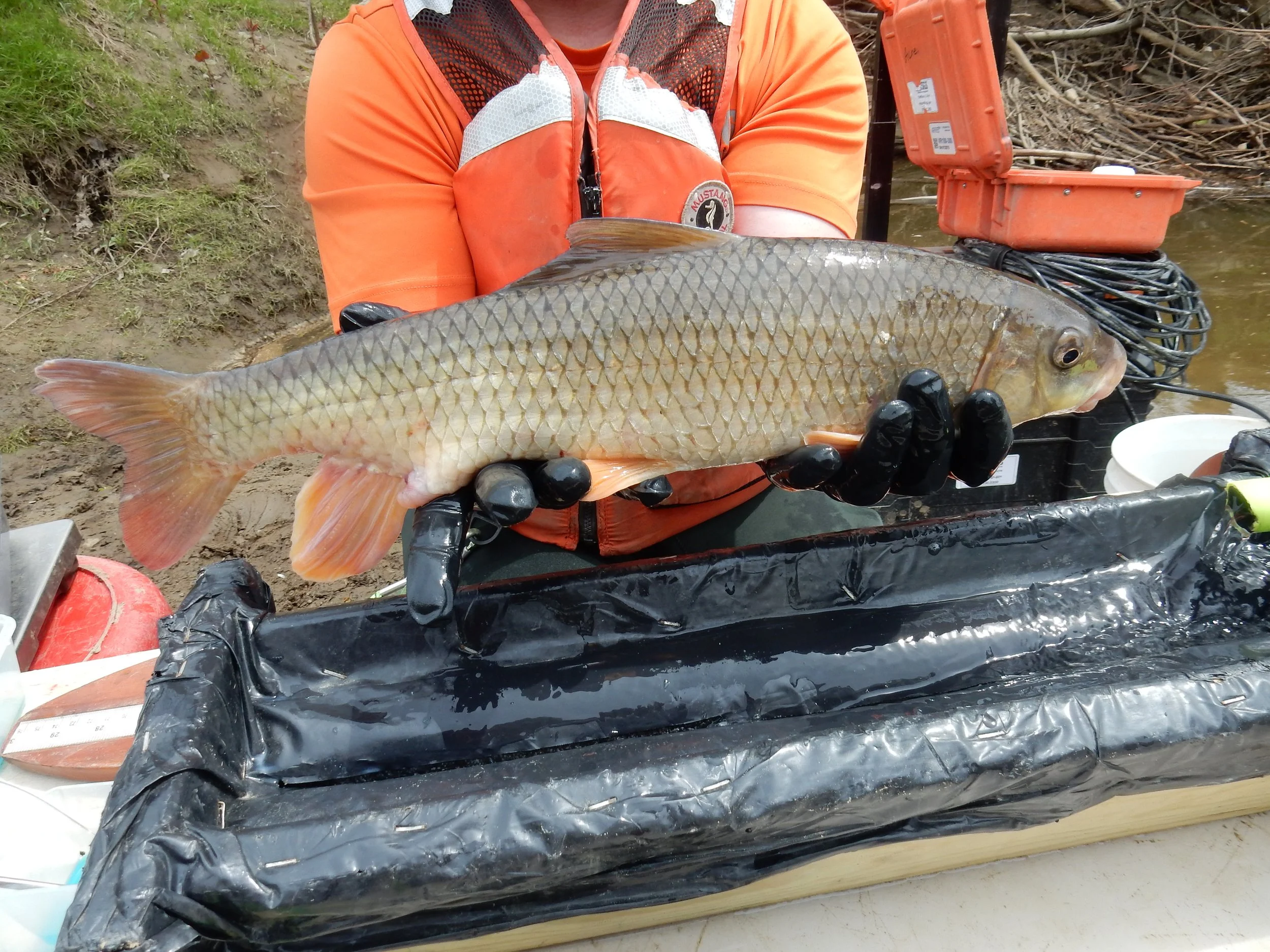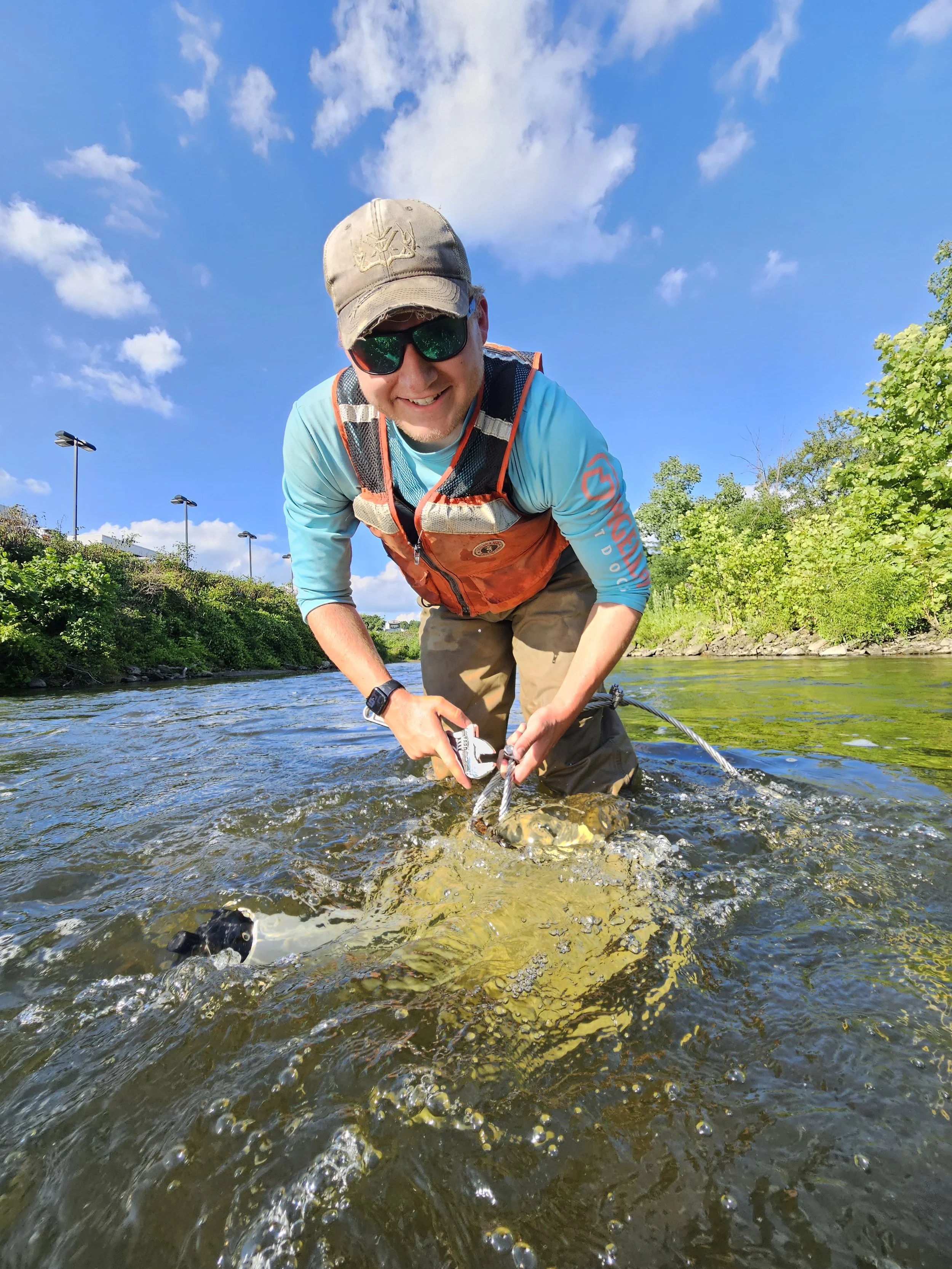Conservation of Native and Imperiled Species
Understanding Ecological Mechanisms for Recovery
Native and imperiled fishes face a common challenge: recovering in systems where the rules have changed. Altered flows, habitat fragmentation, and shifting temperature and sediment regimes have disrupted the cues and conditions that once synchronized reproduction, migration, and recruitment. The QCE Lab studies these mechanisms directly—linking life-history ecology, hydrology, and habitat to identify which management “levers” can be pulled to promote recovery.
Our research spans species with contrasting ecologies and conservation status, from desert pupfish and large-river suckers to migratory sturgeon, using the same guiding principle: restoration succeeds when it targets the processes that sustain populations, not just the places they inhabit.
Pupfish: Linking Local Restoration to Range-Wide Conservation
Desert pupfishes exemplify the challenges and opportunities of conserving species confined to isolated, groundwater-dependent ecosystems. The QCE Lab’s work with the Comanche Springs Pupfish (Cyprinodon elegans) and Conchos Pupfish (C. eximius) combined field experiments, quantitative modeling, and range-wide assessments to understand how hydrology, habitat, and disturbance interact to drive persistence.
At Comanche Springs, restoration of historic ciénega habitats increased pupfish abundance and stabilized populations by reestablishing shallow, vegetated margins that provided spawning and nursery habitat. Using mark–recapture and N-mixture models, the lab showed that structural restoration directly enhanced local carrying capacity and resilience to seasonal drying.
Research on the Conchos Pupfish in the Devils River system demonstrated how a multiscale framework, from 5-m transects to basin-wide distribution modeling, could guide recovery. Hierarchical distance-sampling and species distribution models revealed that abundance peaked in shallow, low-velocity habitats with limestone flocculent, and that reintroduced populations rebounded rapidly following drought once flow resumed. These findings informed targeted habitat restoration and identified potential reintroduction sites across the species’ transboundary range in Texas and northern Mexico.
Together, these efforts demonstrated how fine-scale restoration and broad-scale modeling can be integrated to identify where conservation actions will have the greatest effect, providing a template for recovery of desert fishes worldwide.
Comanche Springs Pupfish (Cyprinodon elegans) tagged with visible implant elastomer for recapture identification.
Conchos Pupfish (Cyprinodon eximius) collected from the Devils River near the confluence with Dolan Creek. Photo credit: Kevin Conway of Texas A&M University.
Blue Sucker: Flow, Recruitment, and River Regulation
The Blue Sucker (Cycleptus elongatus) serves as a model for understanding how altered flow regimes influence long-lived riverine species. Earlier research from our group demonstrated that recruitment success is tightly linked to the timing and magnitude of spring flows, with strong year classes forming only when discharge and temperature align during spawning periods. In regulated Texas rivers, recruitment failures have consistently corresponded with dam operations that compress or delay these critical flow events
Recent POPAN modeling of long-term mark–recapture data from the Colorado River, Texas, revealed a small, relatively closed population with limited recruitment, providing demographic confirmation of our earlier flow–recruitment hypotheses. These results suggest that while adult Blue Suckers persist under regulated conditions, population stability is constrained by infrequent flow events that meet spawning and early life stage requirements.
Together, these findings reinforce a growing body of evidence that Blue Sucker recovery depends less on habitat availability and more on restoring hydrologic variability that sustains episodic recruitment. This work provides a mechanistic foundation for environmental flow recommendations in the Colorado River Basin, linking hydrology, population dynamics, and management to guide flow restoration strategies aimed at long-term population persistence.
Blue Sucker (Cycleptus elongatus) staged behind a boulder presumably for spawning.
Dr. Nate Smith with TPWD holding a Blue Sucker in the Colorado River, Texas
Lake Sturgeon: Reconnection, Recruitment, and Recovery
Once abundant throughout Lake Erie and its tributaries, Lake Sturgeon (Acipenser fulvescens) populations collapsed over the past 175 years, since the time of President Millard Fillmore. Overharvest, pollution, and the construction of dams fragmented habitat and blocked migration routes, leading to their extirpation from nearly every major tributary.
Today, large-scale restoration efforts across the Great Lakes are reversing that trajectory. Improvements in water quality, dam removal, and habitat reconstruction have reopened access to spawning grounds and set the stage for the basin’s most ambitious fish reintroduction effort.
Our lab contributes to this recovery through research and evaluation of established and emerging reintroduction programs. In the Milwaukee River, where stocking began nearly two decades ago, long-term monitoring recently documented the first adult female returning to spawn—a clear sign of population establishment.
In the Cuyahoga River, we are at the early stages of evaluation following the first year of juvenile stocking by the Ohio Department of Natural Resources and the U.S. Fish and Wildlife Service. This effort builds on decades of restoration in the Cuyahoga Area of Concern, where dam removals and habitat improvements have reconnected more than 20 kilometers of river. Using telemetry and spatial modeling, we are testing how stocking locations influence movement, retention, and downstream migration—information that will guide future releases and refine reintroduction strategies.
The return of Lake Sturgeon to tributaries like the Milwaukee and Cuyahoga marks both an ecological milestone and a broader symbol of recovery. It reflects how long-term investment in restoration and science can reconnect systems, rebuild populations, and restore ecological heritage once thought lost.
Juvenile Lake Sturgeon (Acipenser fulvescens) being reintroduced to the Cuyahoga River, OH.
Redhorse and Beyond: Expanding the Conservation Lens
Our conservation research extends beyond rare and imperiled species to include native, understudied fishes that reveal how ecosystems recover. Silver (Moxostoma anisurum) and Shorthead Redhorse (M. macrolepidotum) are abundant yet highly responsive to environmental change, making them powerful indicators of ecological reconnection following dam removal.
Telemetry and community data from the Cuyahoga River show that recent dam removals have reopened migration routes and reshaped fish assemblages. Redhorse now move farther upstream and occupy habitats that were inaccessible for over a century, evidence that reconnection restores ecological function, not just access.
Our ongoing work links these behavioral and assemblage changes to broader recovery processes. By integrating telemetry, trait-based metrics, and community analyses, we are identifying the mechanisms that drive recolonization and forecasting how native fish communities rebuild after large-scale barrier removal.
Shorthead Redhorse (Moxostoma macrolepidotum) ©MDC
Shorthead Redhorse (Moxostoma macrolepidotum) tagged in the Cuyahoga River
Silver Redhorse (Moxostoma anisurum) ©MDC
Silver Redhorse (Moxostoma anisurum) tagged in the Cuyahoga River
Toward Mechanistic Conservation
Across all of these studies, our goal is to move beyond describing patterns to identifying the ecological mechanisms that drive them. By linking behavior, hydrology, habitat, and demography, we aim to understand how and why species respond to environmental change rather than simply documenting that they do.
This mechanistic perspective allows us to predict how populations will respond to restoration and management interventions, whether through altered flow regimes, habitat reconnection, or stocking. It also helps identify which levers are most effective for promoting recovery across different systems and species.
Ultimately, this approach connects process to outcome, ensuring that conservation actions are guided by science capable of explaining, not just observing, the dynamics of ecological recovery.













